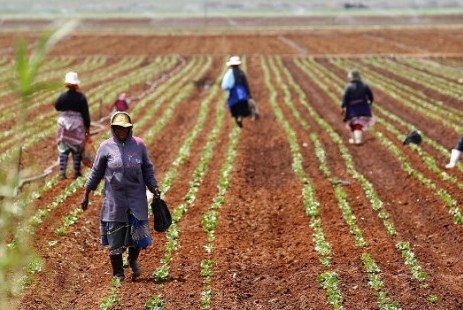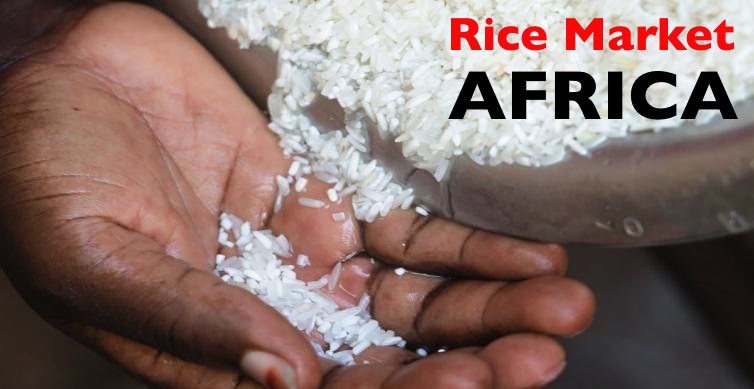India, China poised to capture the market for rice in Africa
Rice is continuously gaining importance as a staple food in Africa. While Africa has vast areas of land that are suitable for rice cultivation, they are underutilized, prompting the African markets to import nearly 40% of its rice requirements at a cost of approximately US$1.1 billion per year.
 India, the world’s biggest rice exporter, saw 5% broken parboiled rice rise $7 per tonne to $352 to $357 per tonne, as aggressive purchases by the government and exporters pushed prices of unmilled rice in the local market. Rice prices in India have been increasing as demand from African buyers continues to grow and government agencies and exporters have been buying rice from local farmers in large quantities, while export markets in Thailand and Vietnam have been quiet due to the absence of many African buyers of rice.
India, the world’s biggest rice exporter, saw 5% broken parboiled rice rise $7 per tonne to $352 to $357 per tonne, as aggressive purchases by the government and exporters pushed prices of unmilled rice in the local market. Rice prices in India have been increasing as demand from African buyers continues to grow and government agencies and exporters have been buying rice from local farmers in large quantities, while export markets in Thailand and Vietnam have been quiet due to the absence of many African buyers of rice.
Rice importers in Africa have bought more rice from Myanmar and about 60 per cent of rice carried from sea routes are exported to Africa. Myanmar Rice Federation (MRF) is expected to export about three million tonnes of rice in 2020.
China is now the top producer, top consumer, top stockholder, top importer and a “rising exporter” of rice. Almost two-thirds of Chinese rice exports were to Africa.
Meanwhile, the amount of rice Thailand has been exporting, especially to Africa, has dwindled, as Thailand is left with only the no-longer-good-for-human consumption rice within the country’s domestic stocks.
The rapid growth in sales to African nations is expected to continue as African buyers increasingly turn to China as stockpiles are almost depleted in rival supplier Thailand.
China sold just over 781,000 tonnes of rice to almost 40 African countries including Ivory Coast and Senegal in 2017. That accounted for nearly 70 percent of China’s total shipments of the commodity, versus 19 percent in 2016.
China has around 94 million tonnes of rice stockpiles, two-thirds of the world’s excess inventory and enough to feed India for a year. A lot of that was accumulated through years of the government buying the grain from farmers at a minimum price when the market price dropped below that level.
 Tanzania’s has recorded a 20% increase in rice imports from Pakistan valued at US$29.6 million between July and December 2017. With the growing demand for rice especially in urban areas, Tanzania is the major producer and supplier of rice in the region, while Kenya and Uganda are minor producers. Tanzania is set to overtake Madagascar to become the leading grower of rice in Africa, having produced over one million tonnes of rice per annum, coming second to Madagascar’s yearly output of 4.3 tonnes.
Tanzania’s has recorded a 20% increase in rice imports from Pakistan valued at US$29.6 million between July and December 2017. With the growing demand for rice especially in urban areas, Tanzania is the major producer and supplier of rice in the region, while Kenya and Uganda are minor producers. Tanzania is set to overtake Madagascar to become the leading grower of rice in Africa, having produced over one million tonnes of rice per annum, coming second to Madagascar’s yearly output of 4.3 tonnes.
Pakistan targets to export four-million-tonne rice annually to fetch US$2 billion in foreign exchange mainly driven by Chinese cooperation with the government and private sector in the field.
Despite the fact that Tanzania is a major rice producer and exporter, it ranks number eight on the list of importers of the rice during the period and the third top African market after Kenya, which is ranked second and Madagascar in the fourth position.
While Madagascar spend US$51.7 million, Kenya spend as high as US$98.6 million to buy rice from Pakistan, with Benin and Somalia also projected on the list of top importers from Africa.
Zimbabwe is a net importer of rice and spends about $80 million annually to import the cereal.
The acceleration in per capita rice consumption in Africa since the mid-1990s is due to the liberalization of rice imports combined with a downward trend of the price on the world market.











